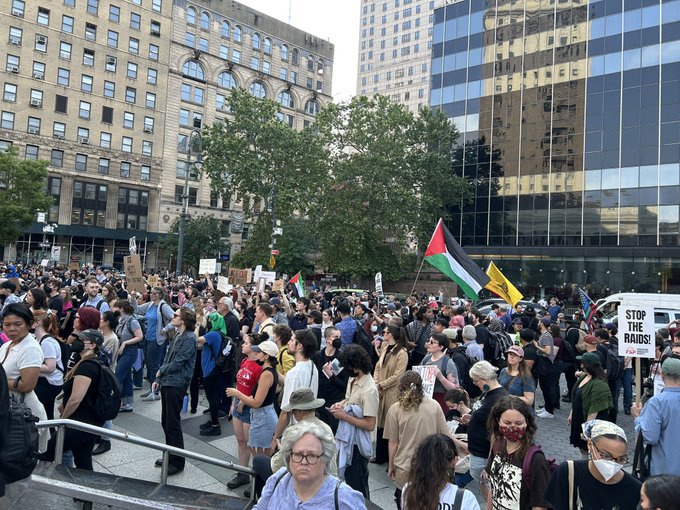In recent days, a wave of protests has swept across numerous cities in the United States, with Los Angeles emerging as a focal point of unrest. These demonstrations, primarily directed against the Immigration and Customs Enforcement agency (ICE), have escalated tensions significantly, prompting authorities to impose curfews and carry out mass arrests in an effort to restore order. The surge in civil unrest coincides with the Trump administration’s aggressive ramp-up of immigration enforcement measures, including the deployment of the National Guard and the invocation of seldom-used federal powers aimed at quelling the disturbances.

The protests have been fueled by widespread public outrage over ICE’s policies and practices, which critics argue have become increasingly harsh and inhumane. Demonstrators are voicing their opposition to the agency’s intensified immigration raids, family separations, and deportations that have affected countless immigrant communities across the nation. In Los Angeles, a city with a large immigrant population, the demonstrations have been particularly large and vocal, drawing thousands of participants who demand an end to what they perceive as systemic injustices perpetrated by ICE.
As the protests have grown in size and intensity, local authorities have responded by implementing curfews designed to limit public gatherings during nighttime hours. Law enforcement agencies have also conducted mass arrests, targeting individuals accused of unlawful assembly, vandalism, and other offenses associated with the demonstrations. These measures have sparked controversy, with civil rights advocates warning that the crackdown risks infringing on constitutional rights to free speech and peaceful assembly.
The Trump administration’s response to the unrest has been notably forceful. In an effort to reinforce immigration enforcement and maintain public order, the federal government has deployed National Guard troops to key cities experiencing protests. This move marks a significant escalation, as the National Guard is traditionally reserved for emergencies and large-scale crises. Additionally, the administration has invoked rarely used federal powers that grant it broad authority to intervene in state and local matters, underscoring the seriousness with which it views the situation.
Supporters of the administration argue that these steps are necessary to uphold the rule of law and protect communities from the perceived chaos associated with unchecked immigration. They contend that ICE’s enforcement actions are lawful and essential for national security, and that the protests, while a form of political expression, have at times crossed into disorder and violence that must be curtailed.
Conversely, critics accuse the administration of exacerbating divisions and employing heavy-handed tactics that further alienate immigrant communities and undermine trust in law enforcement. They highlight reports of excessive use of force during arrests and question the proportionality of deploying military personnel against largely civilian demonstrators. Many activists and legal experts emphasize the need for dialogue and reform rather than repression.
The situation remains fluid, with protests continuing in multiple cities and authorities balancing the challenge of maintaining public safety while respecting civil liberties. The unfolding events have sparked a broader national debate about immigration policy, law enforcement practices, and the rights of citizens to protest government actions. As the Trump administration persists in its stringent immigration enforcement agenda, the country faces a critical juncture in addressing the complex and deeply emotional issues surrounding immigration and social justice.
In conclusion, the recent protests against ICE across the United States, especially in Los Angeles, represent a significant flashpoint in the ongoing struggle over immigration policy and civil rights. The government’s robust response, including curfews, mass arrests, National Guard deployment, and federal intervention, reflects the heightened tensions and polarized views that characterize this contentious issue. How the situation evolves will likely have lasting implications for the nation’s approach to immigration enforcement and the protection of democratic freedoms.

